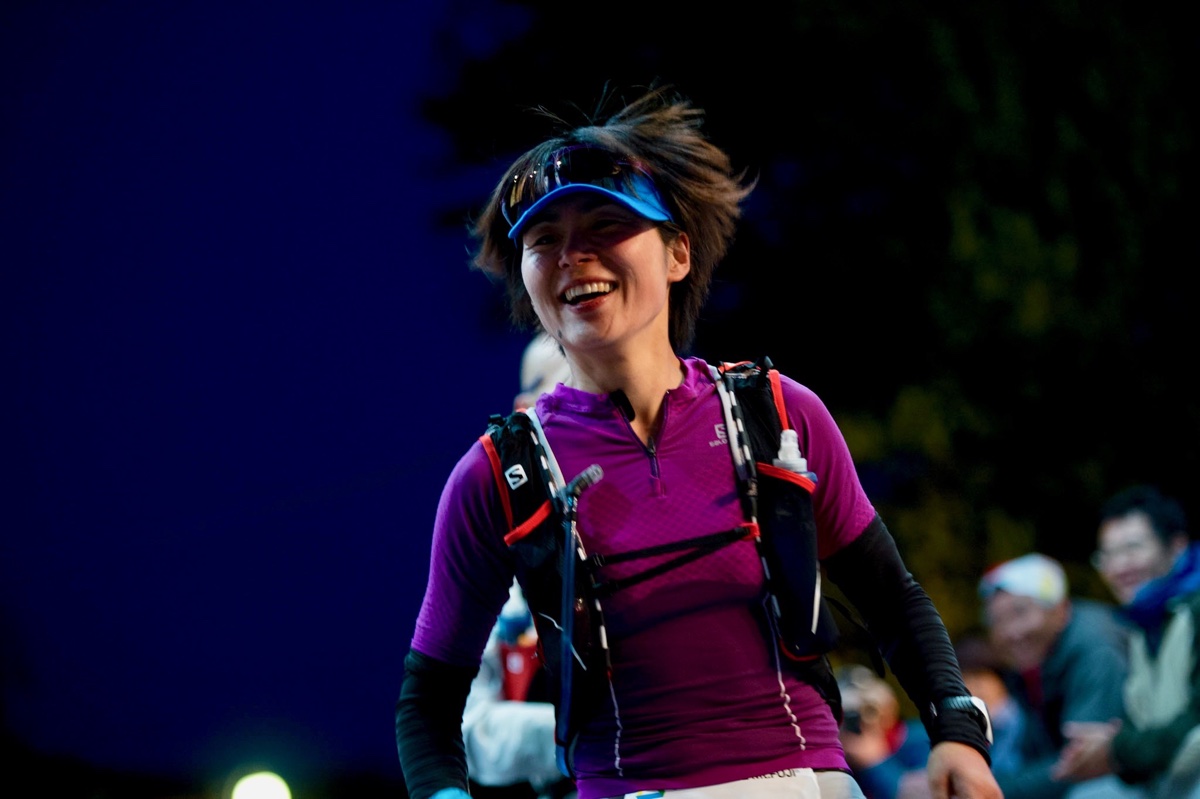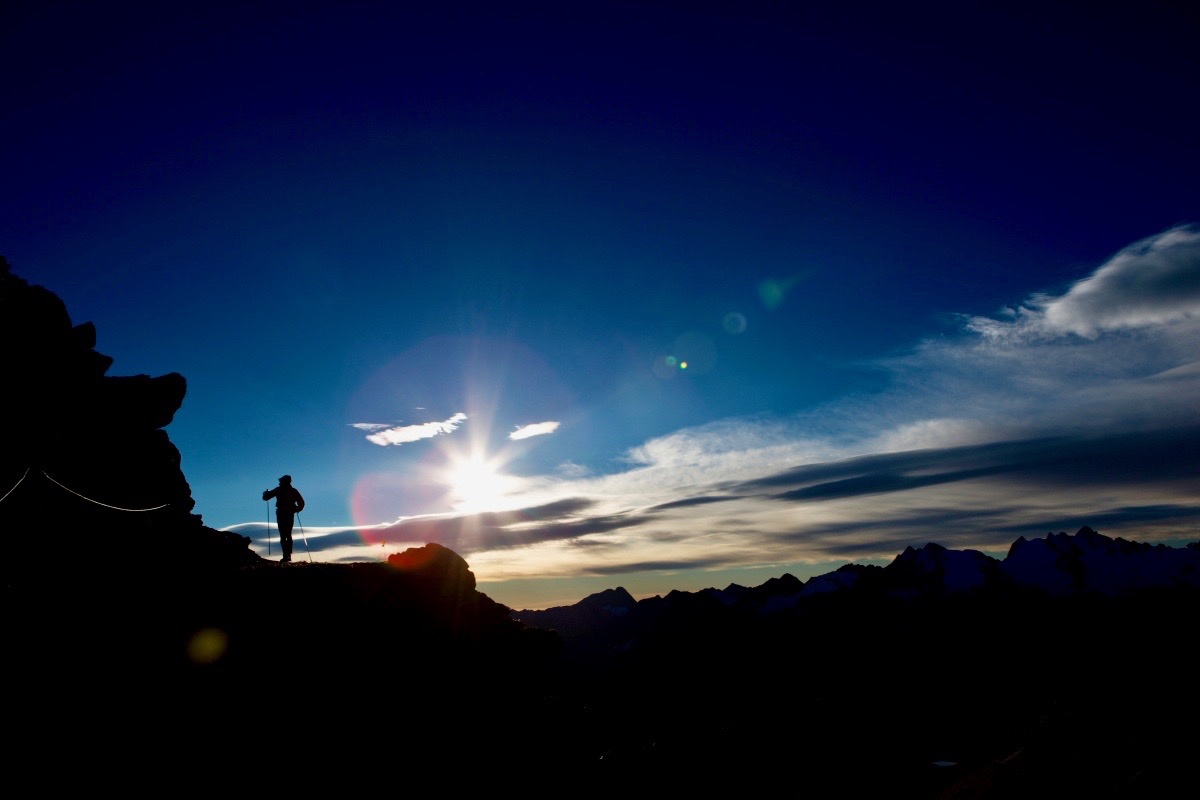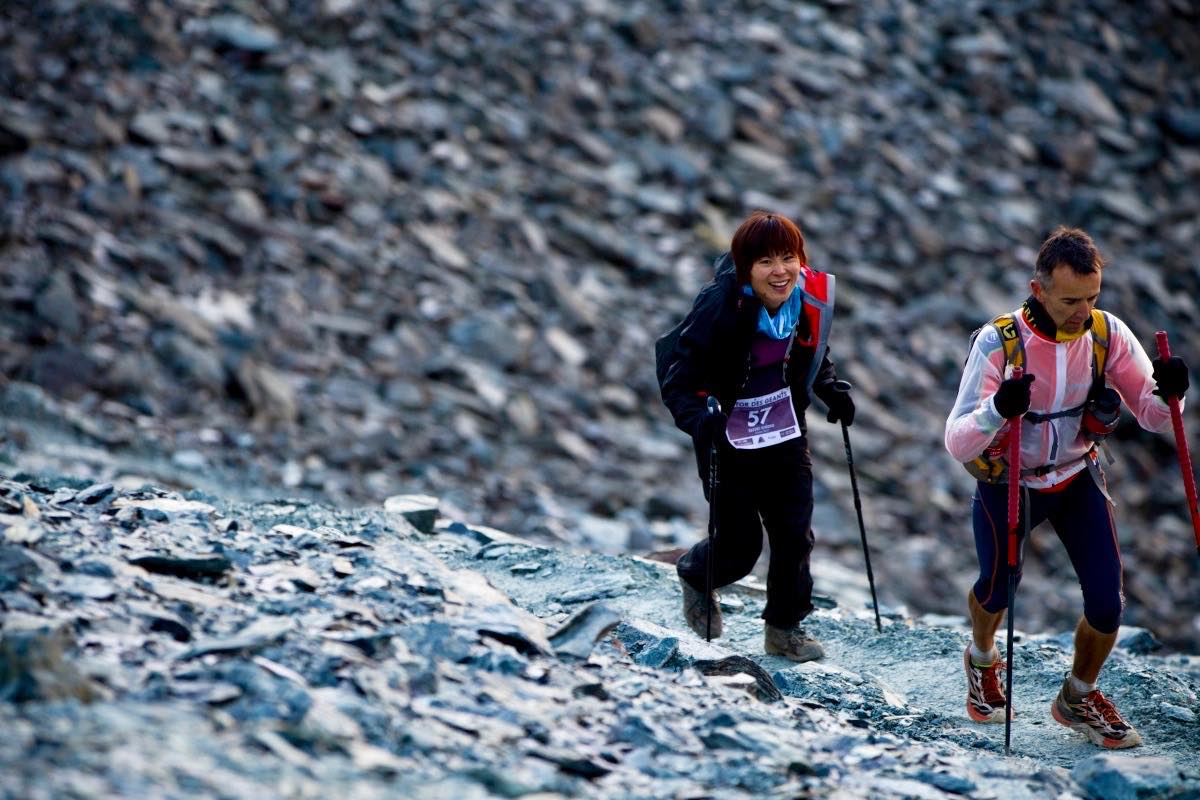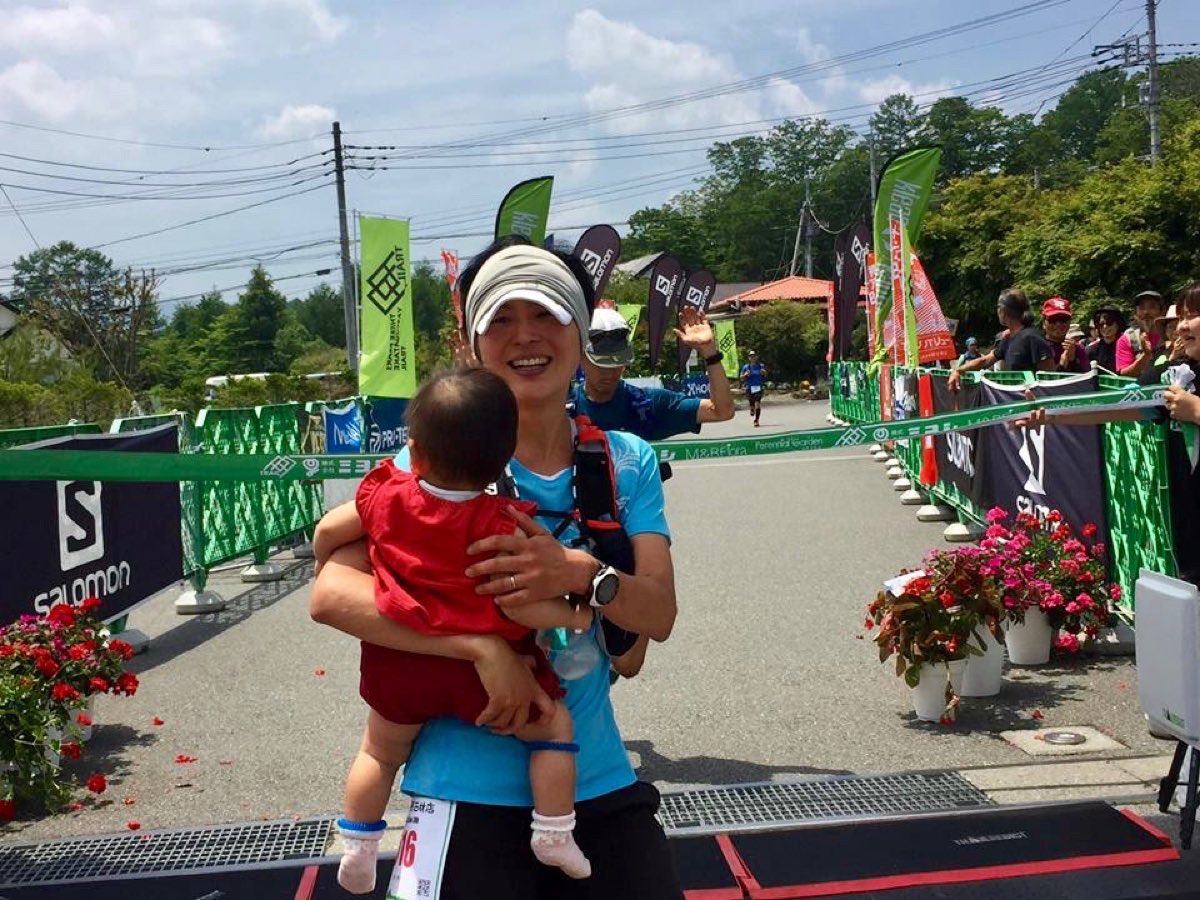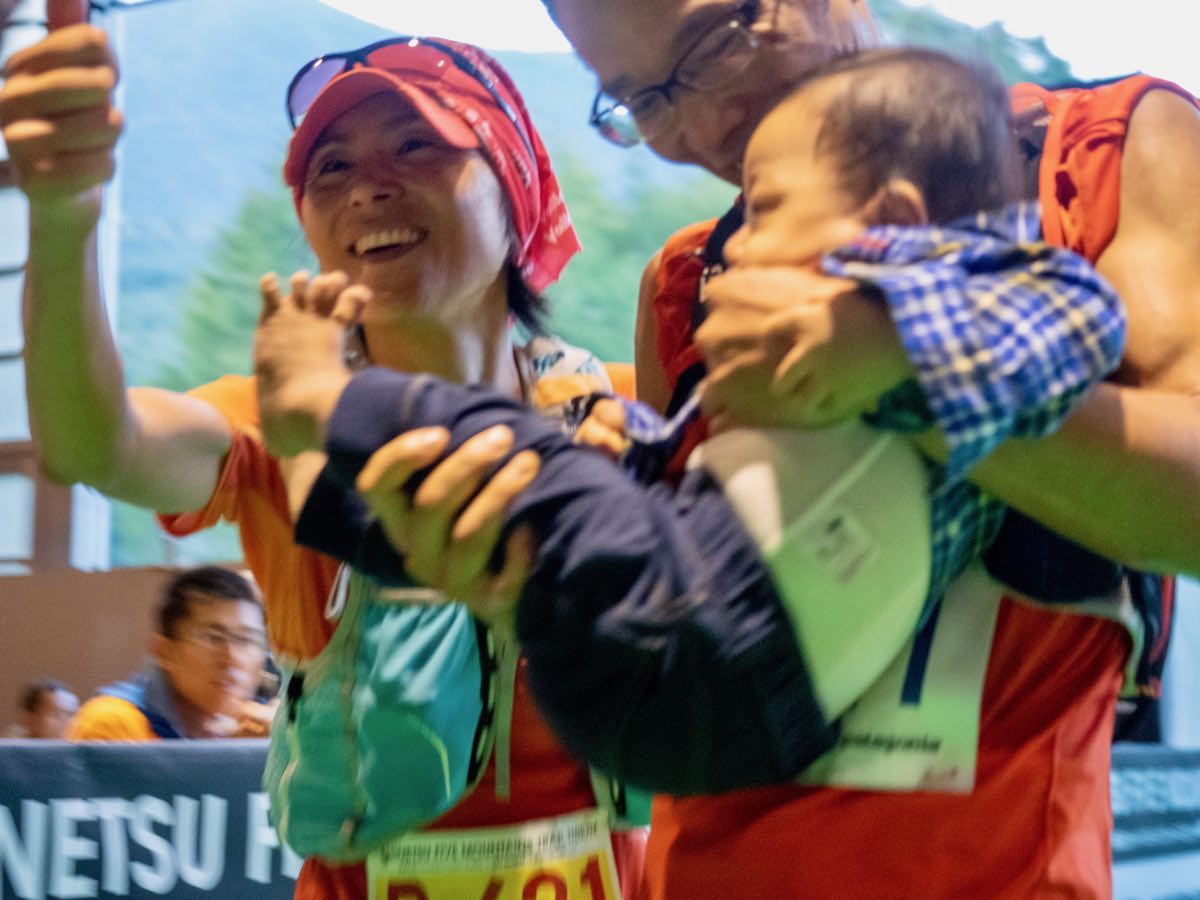Japanese trail running and ultrarunning virtuoso Hiroko Suzuki pioneered the sport not only when it was still small in her home country but also when only a few women were participating. And beyond running, she’s a leader in other aspects of life, including in her work as a professional mountain guide, another previously male-dominant outdoor industry. To add, she’s a wife and mom.
“Hiroko is a pioneer in the ultra and trail running community in Japan. In the early 2000s, our community was so small, and the number of female trail runners was very small, especially those under the age of 30. When Hiroko took second place at the prestigious 2004 Hasetsune Cup, it was a big surprise in the community,” says Koichi Iwasa, a writer, photographer, and owner of the Japanese media source DogsorCaravan.com, which covers ultrarunning, trail running, and skyrunning in Japan and abroad.
Hiroko (hee-roh-koh), 42, lives with her husband and two young kids in Kawasaki, an industrial city with 1.5 million residents abutting Tokyo (population 9.3 million). To the east is Tokyo Bay and 100 kilometers to the west is Mount Fuji, as well as other outdoor spaces like Fuji-Hakone-Izu National Park and Chichibu-Tama-Kai National Park.
For the past 15 years, Hiroko has raced two to seven times a year—with the exceptions of 2014 and 2016, when she was pregnant—and is not slowing down. Over that time, she’s not only raced in her home country, but she’s traveled all over the world for her hobby, including to North America, Western Europe, and Australasia. Examples of her racing include the 2006 Western States 100, the 2008 Canadian Death Race, the 2009 and 2010 UTMB, the 2012 and 2013 Ultra-Trail Mt. Fuji, and the 2012 and 2013 Tor des Géants. Not only has she been a global trail ultrarunner, but she’s been a competitive one. For example, that second place at the 2004 Hasetsune Cup, 10th at the 2010 UTMB, second at the 2012 Ultra-Trail Mt. Fuji, and fourth at the 2012 Tor des Géants.
Of all that racing over all that time at home and abroad, what is her all-time favorite race? The 200-plus-mile Tor des Géants through Italy’s Alps: “The race has overwhelming beauty including the atmosphere and people—everything. Of course, there are times when it is difficult during the race, but there is no other race that I could have so much fun at with such a sense of unity that everyone is moving toward a goal, not a race,” she says.
Going back to the beginning of her relationship with trail ultrarunning, she dove in on a whim in 2003. Prior to that and since 1996, she’d been a jogger, as a hobby. She would run slowly on the road for about one hour each day. She’d never had a coach (and still hasn’t ever had one.) That year, when a friend told her about the 72-kilometer Hasetsune Cup, she “piggybacked” the idea.
“I didn’t know anything about trail running. At first, I was just giving trail racing a try, because my friends told me it was cool, and I thought I could challenge myself. But it touched my heart. I enjoyed it, even though I didn’t prepare for the race and I suffered so much! But the next year, in 2004, I tried the same race again. At the time, I was living far away from the mountains. I trained for one month before the race by running up steps. That run was great. I enjoyed it so much. After that I really decided to do trail running. I moved nearer to the mountains to do trail running,” she says.
The year 2005 brought her to the U.S. to race her first 50-mile event, the Zane Grey 50 Mile, in Arizona, at age 28. There, she met new friends who recommended other U.S. events to her, which began a ripple-effect of the races she’s since experienced in the Western Hemisphere. At the time, the sport was still nascent around the globe and “word-of-mouth suggestions were the most reliable sources of information.”
In addition to racing connecting her with likeminded people, Hiroko has found that the sport makes her more in tune with herself. “Sometimes, in races, I have bad feelings and sometimes good. My mind is changing and it’s changing my mind, which is good for me. I didn’t realize what I was thinking before doing races. Now, during races, I can become clear in my mind. I realize who I am. I get to know myself. I had never really met myself before racing,” she says.
In 2006, Hiroko was introduced to the world of mountain guiding, as a side gig at first. At the time, she worked a typical office job, but some guides she knew asked her to help out. Her focus was guiding on Mount Fuji, the country’s tallest peak and an active volcano.
“It’s getting more common for women to be mountain guides in Japan, but when I started, it was mainly men,” she says. She loved the experience so much that she quit her regular job to pursue a professional path in the mountains. The start of her outdoor career was slow. She finished her mountain-guide certification—the Japan Mountain Guides Association Hiking Guide Stage II—in 2013. She also guides trail running, but a trail-run-specific license doesn’t exist.
“I usually guided local Japanese and mainly older people, because older people like hiking and have more time to go than young people during the weekdays. Young people don’t have time to do it or they do it themselves, without a guide. I’d guide trail runners on the weekends. And, I’d occasionally guide overnight trips, but mostly all-day trips,” she says. She’d primarily guide on Mount Fuji in August, when the conditions were dry. During the peak’s snow season, she’d guide hikers or trail runners in the region’s other mountainous areas.
This chapter in life was an exciting one, and it soon became even more so. In 2013, she fell in love with and married her husband, a lawyer who is equally passionate about running and racing. The two met during the 2012 Ultra-Trail Mt. Fuji. “We were running together for a long time in the race. I got second place during that race, so he definitely understands my enjoyment of ultrarunning and my training,” she says.
In 2014, she co-developed a trail running camp with a company called Venture Events, Expeditions, and Adventures. The workshop was tailored to visitors who wanted to explore Japan. But news of her first pregnancy made her sideline that job. She took the year off from racing, too. In 2015, she did a couple of vertical-kilometer races, and in 2016 was pregnant with her second child.
After the time off from long-distance racing to build her family, she’s now rebuilding her endurance and recently finished the 143k SkyView Ultra-Trail at Mount Hotaka this past September. She’d already had her eye on this goal race years ago when she first found out she was pregnant, so it was perhaps a natural way of re-entering the sport. “I was worried about whether the 143k could be completed, because that was the first overnight race I’d done in six years. I was so glad that I could finish it. I think that’s one of my best efforts. I kept telling myself, ‘Don’t push, don’t push!’ I tried to be just easy-going,” she says.
Her hiatus didn’t seem to deter her ability: She was the sixth female finisher.
But her journey from post-pregnancy to a 26-hour mountain race finish was extended. To regain race strength, she started with a 32k in March of 2018, a 38k in June, and a 50k in September. Then, she was hungry for a challenge so she did a 70k race in April of this year—but realized it was still a bit too much at the time. She backed off the distance a bit for a 55k this past June.
Her family lives one hour by car from the trails in the mountains to the west. To train for SkyView, she’d go to the mountains one day per week, on the weekend, so that her husband could be at home with the kids, a now four-year-old boy and three-year-old girl. Her parents don’t live close by, so they can’t help babysit, she says. She’d leave in the middle of the night, start running in the dark, and finish after a total distance of about 20 to 50k. Then, she’d drive back home by noon to make lunch for the kids.
“I went to the mountains every week from April and on. I woke up in the middle of the night and ran from the dark on. But it was just right because the summer is hot during the day. Mount Fuji is also high-altitude training. This year, my goal was to climb Mount Fuji 10 times: It was successfully achieved!” she says.
When she’d get home from her solo long trail run, her husband would take off on his run while she took over parenting for the afternoon. Right now, her husband’s work schedule is hectic, so his focus is road marathons.
“My husband has always been supportive of my mountain guiding and trail running, and he encourages me to do it. He would say, ‘You can go running any time,’ but I just couldn’t do it. I couldn’t make time for a whole day, because he wants to run, too. I have to share the time—we have to share the time,” she says.
“For me, my kids and house come first. And next is my hobby. I want to do both, because it’s good for both. If you only do childcare, you’ll feel so tired and it will be so stressful. Trail running and training is a relaxing activity compared to parenting, yet training can be strict. I need both,” she says. She’s been patient with the process of having kids and running and training less.
“I have had a strong desire to return to the ultra races, but I wasn’t in a hurry and was waiting for the moment. I wanted to take care of my children. I wanted to enjoy time with them, they’re so cute, and decided to start racing again with a slow schedule,” she says.
Overall, her running mentality is better now, after becoming a parent. “Oh, wow—my ultrarunning mind has changed so much since having children. It’s more relaxing to go ultrarunning. Before I had children, I sometimes would train in the mountains and wasn’t enjoying it so much. After kids, it’s more enjoyable just to trail run and go to the mountains. It’s a greater refreshment. There’s more appreciation now. Yes. More and more, I want to enjoy to do it, and sometimes I want to enjoy it with my kids. I sometimes go there with them to the mountain and I walk with them. Just to hike with them. Sometimes they want to run a short distance! I think they will be a good fit for trail running!” she joyfully says.
For race training, such as for the SkyView, and even between races, she does a slow-paced 10k jog each day on the roads. If she’s training in the winter, she’ll reduce her distances to 10k for that weekly trail run. “In the summer, sometimes I push myself on my trail run, but not in the winter time—that’s just for enjoyment. I have no idea how I go fast during races. I never think about my pace and I don’t think about how I can run fast ever,” Hiroko says.
As a child, her parents would occasionally take her on hikes in the mountains. Otherwise, she’s had no technical training to help develop her mountain-running skills. It seems her ability is natural. “I don’t know why I can run in the mountains. I’m not doing any special training. It’s just right for me. When I’m running on a trail, there are times when a mysterious power comes out. I don’t know where it comes from, but it is in harmony with the mountains. I am very slow when I run on the road, but I find speed when I enter the trail. Maybe, it is because of the rougher the terrain, the more I can concentrate on that trail,” she says.
She’s also practiced yoga for the past five years, for relaxation more than for cross training, which she doesn’t do, she says. If she can’t get to the mountains for a trail run, she’ll run on steps near her house in a park.
Hiroko clearly has an innate internal drive. But what also sets her apart is the context of her athleticism: She’s had courage to build a cultural bridge within this sport, during a time when ultrarunning was even more niche, male-dominated, and localized.
“Japanese are hard workers, so running is suitable for their serious temperament. Japanese run culture emphasizes the sport’s health benefits including diet and stress relief. Running is more popular now than when I first started. But even now, not many people know about trail running. Many times, people say, ‘What is it?’ Especially if they are not really involved in sports. Though there are more females doing trail running now than when I first started, it is still overwhelmingly men. Even if you go to the races, women are about one-tenth of the men,” she explains.
The local community commends her choices to trail run. “Hiroko has not only been successful at home. She jumped into ultrarunning races in the U.S. in 2005. Today, we have plenty of information available in the Japanese language about those races, but there were almost no resources in those days,” says journalist Koichi Iwasa. “I myself was impressed with her run at Tor des Géants in Valle d’Aosta of Italy, in 2012 and 2013. Her runs in TdG were her message to female athletes in Japan, ‘We can run even 200 miles at such a competitive level!'” exclaims Koichi.
Koichi’s wife, Hitomi Iwasa, nee Ogawa, has run races in Japan alongside and in competition with Hiroko. “During races, I feel pressure when I see Hiroko on the course. Sometimes that pressure is really positive for me and motivates me to work hard,” to stay in front of Hiroko, said Hitomi, as translated by Koichi. The pair have dueled several times at races, sometimes Hiroko coming out in front and other times Hitomi being the faster woman on the day. Hitomi continues, “When we had a chance to co-host a trail running camp, Hiroko was very prepared with what to teach and demonstrate to participants. She is a professional and aggressive in our sports. Her career started with mountaineering. She fell in love with all of these activities and has made her living with them.”
Hiroko sees competition in a different light. “I don’t consider myself a professional or competitive runner—I am a fun runner. I just like trail running, want to do my best, and really want to enjoy the race. I never think, I want to win. The place is just a result after that. The race itself is not for the result,” she says.
Hiroko’s passion for mountain guiding and trail racing is rooted in the warmth of sharing time in the outdoors with an awesome community. But ultra distances are particularly perfect for her. “I just like the mountains, time in nature, and the people who are running these ultra races. These long races allow us to experience all these at the same time. There is overwhelming scenery and it feels like a dream world, like the feeling you get when you travel to a new place. Running long distances can be both good and bad: Such an experience cannot be tasted at a short distance. I get a sense of being driven by something larger, something beyond that is not myself,” she says.
To overcome difficult moments in races, Hiroko focuses on the runners around her. “I think about going forward. I love that there are many people who are shining as people in the trail running community, so it’s very inspiring and simply fun. I try to change the situation and my feeling by talking to the runners and staff around me, who are helping me, and I focus on trying to go together. Or, I stop for a while,” she says.
Hiroko says she doesn’t see an end in sight for her own running. She’d like to race the Shiga Round Trail in Japan next May and an undecided race about 100k in distance in Europe in the summer. She loves being a “housewife” and parent but hopes to return to mountain guiding next year, when her littlest goes to kindergarten. A multi-day trail run camp, like the one she designed with Venture, might be too large of a commitment to host anytime soon, she says, due to parenting.
Hiroko says, “I want to keep running for a long time. I’d like the to try ultrarunning in the future, too, but only if [my children] want to. I want to do my favorite things as the children grow up, and to spend time with my kids outdoors. I want to tell the children how wonderful it is to keep chasing their dreams.”
[Author’s Note: Interview quotes have been translated and edited for clarity and tense.]
Call for Comments (from Meghan)
Have you raced or run with Hiroko Suzuki? If so, leave a comment to share your story of sharing the trails!
